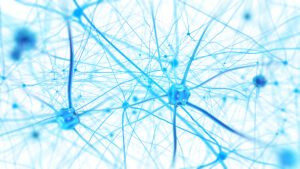Introverts would rather stay home than attend that party and be surrounded by loud people, they would far rather have a nice soak in the tub or read a book and have no fear of missing out!
Thanks to the internet most of us already know if we fall into the introvert category, but, did you know that introverts brains are physically different to their extroverted counterparts? These differences are why introverted people choose to be alone or in quiet environments rather than in loud crowded spaces with vast amounts of energy.
In the 1920’s, Carl Jung came up with the introvert and extrovert terms to help differentiate between personality types and how people energize in different ways. He explained that while the extroverted person gains energy from being in social environments, Introverted people felt more energized by being alone or in a quiet surrounding.
Extroverts feel anxious when alone while Introverts are overstimulated by demanding and busy environments.
While it is very common to move up and down the Introvert/Extrovert spectrum, most people tend to prefer one over the other.
Dopamine
One of the biggest brain differences between the 2 personality types is their reaction to dopamine, which is the chemical that is released into the brain, it has many functions and one of them is mediating pleasure and the reason we seek our external reward and pleasurable activity.
This neurotransmitter is what motivates us to want, be it wanting more friends, more money or the desire to have an attractive partner or receive a promotion at work. With the release of Dopamine we become alert and attentive, and sometimes are prone to taking risks. While both Introverts and extroverts have the same amount of dopamine in their brains, dopamine is less active in the Introvert.
Acetylcholine
Just like dopamine, this neurotransmitter is also pleasure related, the difference is that Acetylcholine is what makes introverts feel good when being alone and quiet and allows a person to be able to focus on a solo task for a longer period of time. Introverts find it easier to turn inwards when they are in calm environments and that is why they struggle to adjust to larger more energized situation.
Nervous system
 Our nervous systems are divided into two, the Sympathetic side: fight, fright, fright and the parasympathetic side: Rest and Digest.
Our nervous systems are divided into two, the Sympathetic side: fight, fright, fright and the parasympathetic side: Rest and Digest.
Adrenaline is released when the Sympathetic side is stimulated, prepping us for action. What happens in the brain is the mechanisms that allows us to think are paused.
When the parasympathetic side is activated we relax, energize and metabolize food. Acetylcholine is then released allowing blood flow and alertness. Dopamine increases alertness in the rear of the brain.
Introverts tend to use the Parasympathetic side of the nervous system more often and this is what allows them to be calm and relaxed and think.
Overthinking
Extroverts receive external information differently, it travels through areas of the brain responsible for touch, taste, sound and sight.
Introverts process this information via a longer pathway and then travels into the right front insular (empathy, emotional thought, self-reflection), the Broca’s area (self-talk and planed speech), the right and left front lobes (idea and plan selection), and, the left hippocampus (places personal thoughts into long term memories).

This long process is why introverts generally take longer to speak or react and make decisions.
Gray Matter
The Journal of Neuroscience discovered that introverts have thicker and bigger gray matter in their prefrontal cortex, which is where abstract thought and decision making happens.
This means introverts use more energy to think while extroverts, who have less gray matter are able to act spontaneously.
H/T: Life Hack

